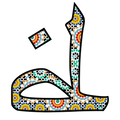The Art of Moroccan Pottery and Ceramics

The Art of Pottery is one of Morocco’s renowned know-how.
Morocco’s pottery and ceramics are one of the real treasures of the Kingdom with diverse traditional and modern colors and designs influenced by Amazigh and Islamic art and before them, absorbing Phoenician, Roman, and Byzantine designs.
Artisans carry on centuries-old traditions in their designs that are passed on through families.
The different types of Moroccan pottery
There are two major pottery schools in Morocco: the northern and southern school, known for its sobriety (fewer colors), and the urban school, produced mainly in Salé, Fez, and Safi and with more patterns and colors, heritage of the Arab civilization and stamped with Islamic art.

The three main pottery centers are Safi, Fes, and Meknes.
Safi is by far the largest production center where apprentice workers knead the clay, and skilled artisans create the shapes out of the sun-baked clay on the potter’s wheel. Designs are etched on the wet clay and dried in the sun. They are then fired in kilns to evaporate the moisture from the clay, cooled, and then decorated with colored glazes which make them water-resistant. Pottery from Safi is known for its metal inlays and is often made of red clay and glazed in green, turquoise, and black.
Beyond the traditional Tajine that all Moroccan families possess, pottery decorates and embellishes the interiors by bringing charm and authenticity. Like all ancestral know-how in Morocco, pottery has been transmitted from generation to generation and has reached a high degree of perfection and notoriety throughout the world. Its diversity makes it rich and immortal.
The making process of Moroccan pottery

Patience is the watchword when working with clay. The craftsmen potters prepare the material which he dries and then crushes. Then the clay is pulverized and soaked in water, then smoothed and kneaded, cut into strips, and rolled. After several stages of preparation come the decisive stage where the artisan potter kneads the clay that will then be used to make pottery.
Firing the piece also requires a lot of time and patience. It is done in a traditional oven for 6 hours at a temperature of 900 degrees. After 6 hours of waiting, the cooled pottery can be recovered so that the potter, agile with his hands, can finally decorate it!
At MyTindy, we work with several artisans from Morocco who create stunning Moroccan pottery and ceramic. We made a selection for you below to show you what authentic Moroccan pottery looks likes. We hand-picked pottery with traditional and modern designs to truly showcase the variety of Moroccan ceramics.










Leave a comment